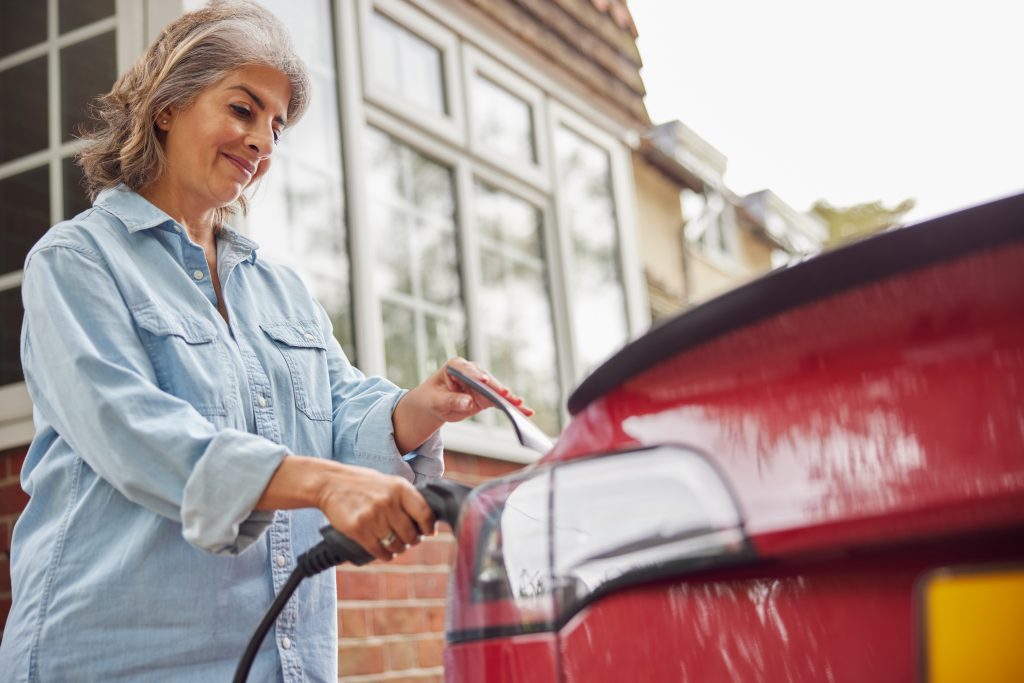When it comes to the change that drives us —towards a future energy system in which consumer needs, preferences and expectations are the central consideration — words matter.
That’s why we’ve recently made the decision to stop referring to Distributed Energy Resources (DER) and to instead name these critical parts of the energy system for what they really are.
Consumer Energy Resources (CER)
We have done this for a number of reasons but mostly because we hope that by changing the name we might begin to shift the energy sector’s thinking about how to approach such assets (and, by extension, their owners).
Despite only making the change recently, we’ve seen widespread interest from across the sector and no other than AEMC/ESB Chair Anna Collyer begin to use the term in her recent speeches.
Increasingly, we find ourselves being asked: Why did you make this change and how are the two terms even different?
What are we actually talking about?
If you work in or adjacent to the energy sector, you likely know – or think you know – what DER means. It’s a term almost exclusively used by system insiders to refer to assets and resources that are owned and managed by those we’ve tended to think of as system outsiders: everyday people.
As consumers have increasingly added technology such as solar PV panels, home batteries and electric vehicles over recent years they have adopted a new role as both generators and storers of energy, alongside the role they previously filled in the system for more than a century: consumers.
The need for a term to describe these assets in the aggregate has primarily emerged from a growing understanding of the role they can and should play in the energy system we are transitioning towards. If we can find ways these resources can benefit the collective while also benefitting their owners, and have them work efficiently together while doing so, the energy system we all rely upon can be more resilient and flexible. Future supply and demand can be more evenly matched, helping to keep costs down for everybody.
All of which is fine, but it’s unlikely to be the way consumers themselves think of these things. If system shapers want consumers to come along on the journey and make their own assets available in various ways, it’s not a bad idea to talk to them in a language they understand and start from a viewpoint that places them at the centre.
It’s hard to imagine any consumer driving home from the showroom with a new electric vehicle, looking at it lovingly in the driveway and telling their neighbour: “Check out my new distributed energy resource.”

Where is the centre and where is the periphery?
We say the notion of DER is a disconnection from the way consumers think about their own resources. It begins with the notion of ‘distributed’. Immediately, we are told, the most important thing about these assets is that they are not centralised but instead are scattered.
Of course, that rather depends on how you look at it.
These resources are owned by consumers. They live where consumers live. If we can agree that consumers are not outsiders to the energy system, they are the system… then perhaps these resources sit at the centre and not on the far-flung periphery.
Where is this generation and storage located? In the exact same places that consumption happens.
Think about it this way and suddenly everything flips. Large scale generators such as coal-fired power stations, solar and wind farms are the ones located on the periphery. Mostly they are far from population centres and require long transmission lines to carry electricity to where it is needed. Maybe it is these assets we should think of as ‘distributed’.
DER is not broad enough.
Another reason we’re changing our language relates to what people often mean when they mention DER. What we too often see is a concentration on technology: solar panels, home batteries and increasingly, Electric Vehicles.
All of those things matter, obviously, and all of them are owned by consumers. But that’s not the full extent of what we should be thinking about.
Some of the assets consumers own, and which have the potential to benefit both their owners and the system itself, are less shiny and new. Appliances, such as hot water systems, coupled with consumer willingness to use them in certain ways, can act as hugely-valuable storage assets for a balanced energy system. They are most-definitely CER.

Consumer ownership might also be more collective. Community batteries, owned and shared by groups of consumers, are also CER.
Other consumer-owned resources are even more intangible. One thing that essentially all consumers have — regardless of their economic circumstances — is load. They are ‘owners’ of the amount of electricity usage that is required to live their lives: wash their clothes and dishes, shower, keep warm or cool and carry out other necessary tasks.
If it can be time shifted (and not all of it can or should be) parts of that load could carry out valuable work in the energy system, adding demand at times when there is an abundance of electricity and lessening demand at times when supply is insufficient. Load will be a valuable resource both for tackling issues relating to future reliability (do we have enough generation to meet demand across the day?) but also for challenges around system security (are we able to respond to more immediate threats where a specific event has the potential to cause widespread outages or disruptions?)
In the first instance this might involve consumers making permanent changes to their consumption habits – heating their hot water in daylight hours for example – so that we better balance our supply and demand across the day. In the second instance, it will likely be more about responding to individual events on the rare occasion that the system is under extreme pressure – such as increasing air conditioning by a few degrees on a hot summers day.
We should not simply presume that all consumers can, or are willing to, participate in such activities. But if the case is well made and social licence secured then it seems likely some will. Those who are prepared to do so should be rewarded for it. Their load can be viewed as both an asset both for the system and, more importantly, for themselves.
This broader way of thinking about what constitutes a resource can also help make our energy system more inclusive. Not everyone can afford to put a battery in their garage. In fact, for many Australians doing so will make little financial sense. But everyone has load and some people have more flexibility than others when it comes to how they use it. They should be allowed to benefit from the energy transition too.
Integration or re-imagination?
When we talk about consumer energy resources, the verbs we use to describe the task at hand matter too. Across the system we often see networks, regulators, rule makers and technology companies talking and making plans for ‘DER integration’.
Defined in this way the task seems misleadingly simple. There is a system, comprising large generators, transmission and distribution, that has for more than a century successfully delivered electricity to our homes and businesses. Now there are all these new assets, that can both generate and store electricity, or else reduce demand (which has the same impact as increasing generation). The sheer number of these resources makes them harder for system planners to see and take into account. Seen from such a viewpoint this messy, cacophonous chorus of voices is a problem, a risk and even an annoyance — compared to the simple, centralised system of yesteryear.
But if these resources are sometimes seen as a problem for the system, they are also its best chance of a solution. The future energy system we need – one in which energy is clean, affordable and abundant — cannot be delivered if consumers and their resources are not playing their part.
Seeing the task as “integration” suggests a need to incorporate these slightly-inconvenient resources into the system we already have. Like an oyster enveloping a speck of grit to turn out an elegant, perfectly-formed pearl. This is the challenge from the point of view of the system, a response to neutralise and then harness the disruptive danger of democratisation.

Another verb we often hear is ‘orchestration’. This is only slightly more accurate, in terms of describing the challenge.
Orchestration suggests coordinating these assets so that they are all working in concert, efficiently and effectively. But to what end? Orchestras generally come with a conductor and a set of sheet music. Implicit in this verb is the idea that such assets exist for the good of the system, that they share a common outcome, and that their primary purpose should be in delivering that outcome.
But can we honestly say this is why consumers purchase solar panels, a hot-water system or an EV? Or why they are willing to change their consumption habits?
We say the challenge is re-imagination. We need to rethink the system so that we understand that the resources consumers own and manage are as important as any others (and likely most important to them). Consumers, after all, buy these appliances because they believe they will derive benefits from them. At the moment, it’s likely they primarily construe those benefits in terms of the electricity they can generate and either use or sell. They also construe them in terms of the feeling of independence they get, the perceived insulation from price rises and bill shocks, or the feeling they are doing their bit for the environment.
The task ahead is not only for consumers to be convinced of the benefits that can flow from having their CER employed in various ways but for system shapers to make good on the probability that such benefits are tangible, substantial and a non-negotiable goal for the energy transition.
It will be a difficult process but it is one that we cannot afford to get wrong. It may be a small step but starting off with honest and appropriate terminology is more than just a symbolic change. Only by seeing the task clearly and accurately can we begin working towards a future system that truly places consumers and their resources at the centre.
